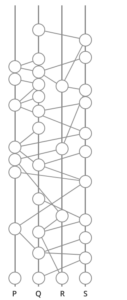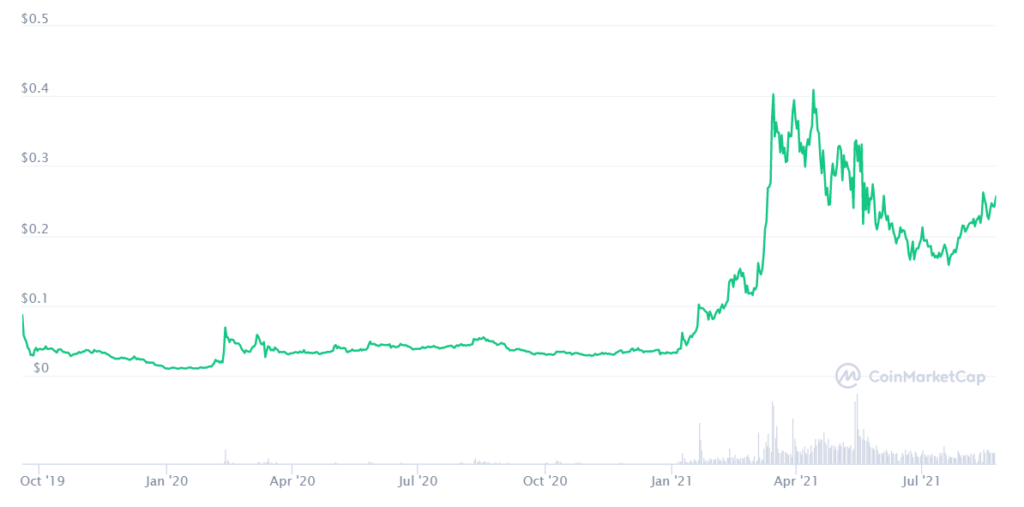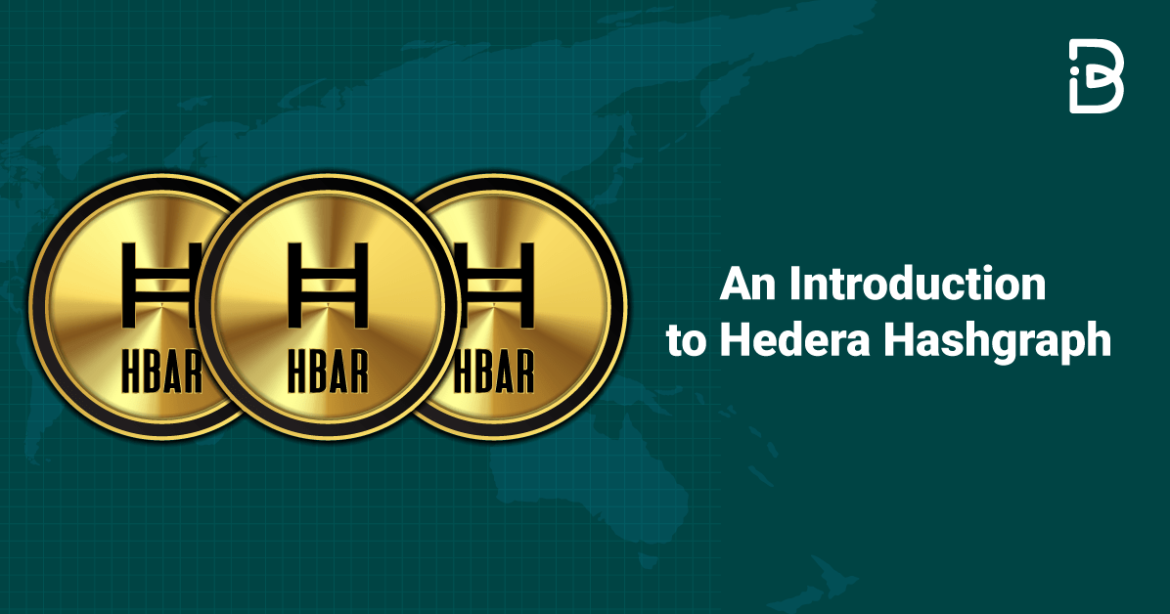Hedera Hashgraph presents itself as an alternative to blockchain that can quickly and cheaply process transactions.
Most blockchain projects these days rely on Mining, an energy-intensive process requiring computers to work through fiendishly difficult computations to verify transactions, which poses several environmental problems. Hedera Hashgraph claims to step aside from the mining problem by replacing it with an entirely new ledger technology.
Can Hedera make this possible? To find out, keep reading!
What is Hedera Hashgraph?
Table of Contents
Hedera is a public distributed ledger and governing body built from the ground up to support existing applications running on a web scale. Developers use distributed ledger technologies to build computational trust directly into their applications.
Hedera is unique in that it achieves the same result as the most ubiquitous public blockchains (such as Bitcoin or Ethereum), but in a way that is faster, fairer, and more energy-efficient, stable, and secure ? these advantages can be attributed to the underlying hashgraph consensus algorithm and the global enterprise governing body, which owns and operates Hedera today.
Hashgraph is not a blockchain in the sense that it’s built on a chain of blocks. It’s best to imagine it as a graph, whereby the speed of verifying transactions goes up as more transactions are added to the network.
The name for the technology it’s based on is known as a DAG?, short for Directed Acyclic Graph.

This technology is designed to help Hedera Hashgraph achieve 100,000+ transactions per second, making it a true competitor to Visa and other mass-market payment systems.
The Hedera network currently performs 6.5 million transactions per day with an average transaction time of 5 seconds?easily surpassing Ethereum’s 1.2 million and Bitcoin’s 300,000 transactions put together.
Isn’t that all a blockchain network dreams of?
Onto what makes Hedera so unique!
The 3 unique properties of Hedera Hashgraph are:
- Fair: It uses the uniform time-stamping technique that makes it fairer than all other algorithms.
- Secure: With an asynchronous Byzantine Fault Tolerant System, neither a member can stop the community from reaching a consensus nor change after it has been reached.
- Speed: It can handle more than hundreds of thousands of transactions and verify over a million signatures per second.
How does Hedera Hashgraph work?
The 2 protocols Hedera Hashgraph works on are:
- Gossip about Gossip
- Virtual Voting

Gossip about Gossip is one of the popular concepts in networking ? gossiping means spreading a piece of information to another person who is not aware of it yet.
A council of 19 multinational corporations around the world governs the platform and the software that will run on millions of nodes globally. To reach a consensus, instead of mining, nodes on the Hashgraph ?gossip? with each other, comparing notes on the network’s transaction history.
As the nodes gossip, they select a few ?famous witnesses.? Each of these witnesses is an event or a transaction and they become famous because they are communicated to the nodes early in the process. The chosen nodes then compare the gossip about these famous witnesses in the majority of nodes.
? So all we do is we talk the way we talk anyway to send out our transactions, we add a tiny bit of information and it gives us this entire history. The history is called a Hashgraph.?-Leemon Baird
Virtual voting?is defined as how a node gets to know whether the transaction is valid.?
If any transaction has?2/3rd of the node as a witness?in the network, it is a valid transaction. No matter if a third node turns Byzantine, the algorithm would still perform its function because?Hashgraph is based on Byzantine Fault Tolerant System. The voting takes place over plenty of rounds.
In the future, Hedera hopes to make mainnet nodes permissionless, allowing more people to participate in the transaction verification process and protect the network against attacks.
Hedera’s Four Main Services
The Hedera Hashgraph network comprises 4 main services, which work together to allow transfers of value, the creation, and execution of smart contracts, token services, and more. These are:
- HBAR
A cryptocurrency used for enabling low-fee, highly customizable transactions on Hedera. HBAR is the fuel that powers the other Hedera services.
Second, it’s used to help secure the network, since HBAR users can stake their tokens to assist with maintaining the integrity of the platform.

Source: https://coinmarketcap.com/currencies/hedera-hashgraph/
- Smart contracts: Used for automatically executing logic and building decentralized applications targeting numerous possible use cases.
- Token Service: Users can configure, mint, and manage native fungible and non-fungible tokens on the Hedera network without needing to deploy a smart contract.
- Consensus Service: For attaining fast, fair, and secure consensus in any application that requires trust. The Hedera Consensus Service (HCS) acts as a trust layer for any application or permission network and allows for the creation of an immutable and verifiable log of messages.
The Advantages of Hedera Hashgraph
With the unquestionable new DLT, Hedera Hashgraph has a bucket full of advantages. Here’s to list of a few:
- Claims to achieve the highest possible level of security, even when malicious actors are present on the network, through a system called aBFT (asynchronous byzantine fault tolerance) that is employed by the nodes.
- Faster than the Bitcoin or Ethereum blockchains because transactions can be processed in parallel, not serially.
- Fast latency?it takes only a few seconds for a transaction to be sent out and confirmed (with 100 percent certainty) by the network.
- Supports the same object-oriented programming language that Ethereum uses, known as Solidity, which is commonly used for smart contracts.
- Extremely low fees and rapid transactions, with transactions reaching absolute finality in just seconds, and transaction fees of under 1 cent.
The Disadvantages of Hedera Hashgraph
Among the many advantages of Hedera, there are a few disadvantages too. Let’s see what those are.
- Unlike many cryptocurrencies, Hedera Hashgraph isn’t open source. Instead, the technology is patented, preventing developers from forking the protocol to create their own public versions.
- Beyond this, with 39 governors, it’s questionable whether Hedera Hashgraph offers the decentralized solution that blockchain purists clamor for.
Which companies are building on the platform?
There are already several projects building tokens on Hedera but this will be fleshed out in the months ahead. Some of those companies are listed below:
- Virtual trading platform TrakInvest.
- Agryo is a farming loan platform that’s building a decentralized data-driven prediction model.
- Carbon, which has launched the first stablecoin on Hedera.
- AdsDax ? a fast and fair ad marketplace built on Hedera.
News on Hedera
One of the U.K.’s top universities, the London School of Economics and Political Science (LSE), has joined Hedera Hashgraph as a member of its governing council.
The LSE becomes the 39th organization to join the Hedera Council and the second higher-education institution, following the University College London in May 2020. The LSE said it has joined Hedera to advance its research in the field of blockchain and will offer opportunities to students related to hackathons, thought leadership, and research opportunities.
The Future of Hedera Hashgraph
A year and a half in the making, the Hashgraph stands out from other distributed ledger technologies (DLTs) in several ways. Its creators claim that it works more efficiently than blockchains, making it more suitable for enterprises and commerce. They also describe the Hashgraph as a 3rd generation public ledger, just like they refer to Bitcoin as 1st generation and Ethereum as 2nd generation.
In February, Hedera launched the Hedera Token Service, enabling anyone to create tokens on the platform. Transferring tokens will cost just $0.001.
According to its roadmap, there are several incoming upgrades to the Hedera Hashgraph mainnet over the coming months. There are plans to reduce the amount of downtime the network needs when maintenance is performed, enabling multiple parties to make transactions as well as sharding.
By combining high throughput, low fees, and finality seconds, Hedera leads the way for the future of public ledgers.
Say what you like about it, but Hedera certainly has ambitious plans.
About Us
ImmuneBytes is facilitating blockchain security by employing the use of cutting-edge techniques on smart contracts and decentralized applications. We have a team of experienced security professionals who are adept at their niches and provide you with innovative solutions and consultation. So far we have worked on 175+ blockchain start-ups on different blockchain frameworks, with clients spread across the globe, and are continually unfolding ourselves to make this decentralized movement thrive.

